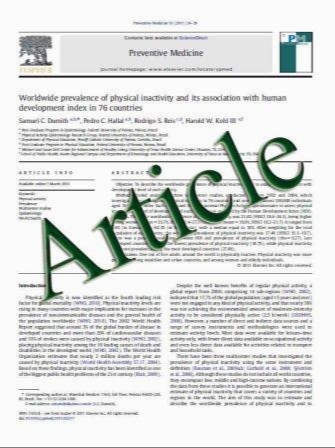Clinical analysis of the risk factors of slow coronary flow
- نوع فایل : کتاب
- زبان : انگلیسی
- مؤلف : Shuang Xia Song-Bai Deng Yang Wang Jun Xiao Jian-Lin Du Yu Zhang Xi-Chun Wang Ye-Qing Li Rui Zhao Li He Yu-Luan Xiang Qiang Sh
- چاپ و سال / کشور: 2010
Description
Slow coronary flow (SCF) phenomenon is a coronary microvascular disorder characterized by the delayed passage of contrast in the absence of obstructive epicardial coronary disease, and is an important clinical entity because it may be the cause of precordial pain when the body is at rest and/or during exercise. Although clinical and pathological features of SCF have been previously described, its etiopathogenesis remains unclear. The present study aims to investigate the risk factors of slow coronary flow, in order to provide the foundation for further exploration of potential mechanisms of SCF. A total of 47 consecutive patients with documented slow coronary flow, and 33 patients with normal coronary flow—as defined by TIMI frame count (TFC)—were recruited for this study. Clinical information was collected, and biochemical indicators including high-sensitivity C-reactive protein (hs-CRP), and a marker of systemic inflammation were detected. Logistic regression analysis was performed for statistical analysis. SCF patients had a higher level of serum uric acid (323.2 ± 79.3 vs. 282.8 ± 82.4 lmol/l, p = 0.03), 2-h postprandial blood glucose (8.6 ± 2.7 vs. 7.5 ± 1.8 mmol/l, p = 0.04), platelet count (165.9 ± 51.6 9 103 vs. 127.0 ± 32.0 9 103 cells/ll, p = 0.0003) and hs-CRP (3.4 ± 0.8 vs. 2.0 ± 0.9 mg/l, p\0.0001) than those of patients in the control group. No marked differences in other variables were observed between the two groups. Logistic regression showed serum uric acid level (v2 = 3.84, b = 0.007, p = 0.049), 2-h postprandial blood glucose (v2 = 5.02, b = 0.277, p = 0.025) and blood platelet count (v2 = 12.16, b = 0.026, p = 0.001) were independent predictors of SCF. When hs-CRP was included in the multivariate model, hs-CRP (v2 = 21.19, b = 1.90, p\0.0001) was the only independent predictor of SCF. These findings suggested that an elevation of serum uric acid level, 2-h postprandial blood glucose, and blood platelet count might be the causes of SCF, and inflammation was likely to be implicated in the causal pathway leading to SCF.
Heart Vessels DOI 10.1007/s00380-010-0081-5 Received: 6 November 2009 / Accepted: 30 July 2010


